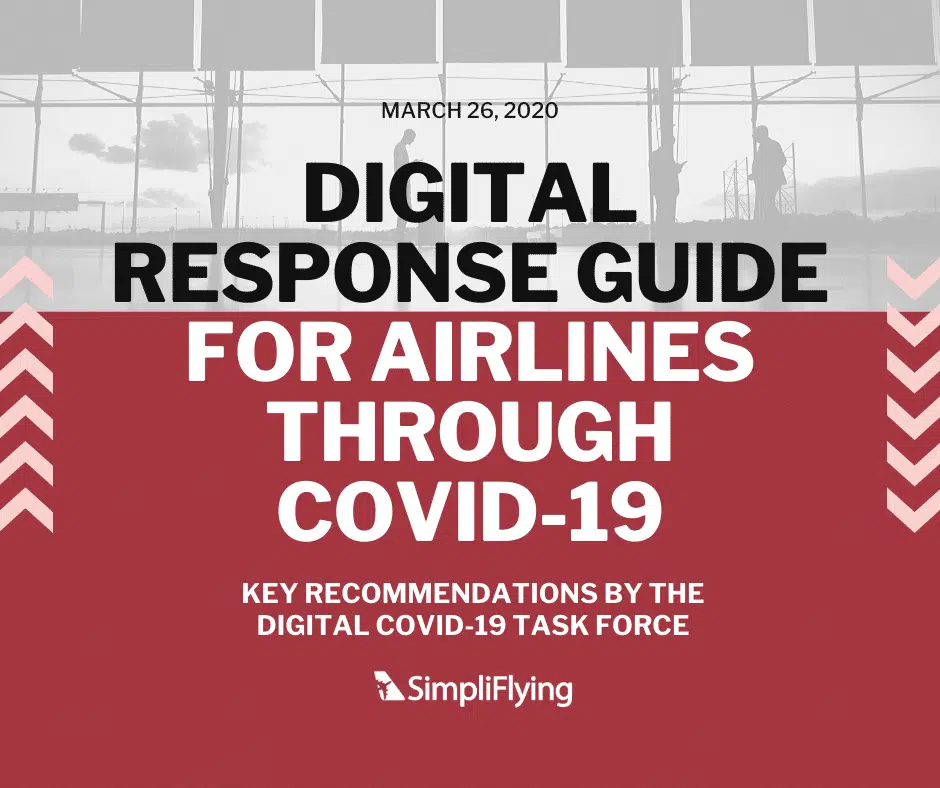The Covid-19 epidemic’s steady spread has led to strict controls being put on travel around the globe. While in the APAC the situation has been slowly stabilising, for those in Europe or the Americas it’s just beginning.
While it heavily affects airline operations, it also greatly influences airline customer service and its digital assets. To see how airlines in different parts of the world have been dealing with these issues, we invited some of the top airline digital leaders to join our Digital Airline Task Force call.
Here we have compiled the key recommendations in 3 simple steps to help airlines prepare and respond better to the Covid-19 crisis.
Step 1: Understand digital matters
When it comes to establishing clarity in such disturbing black swan events as the Covid-19 crisis, it is crucial to have a clear understanding of the importance of digital.
Scale Customer Service
Due to constant schedule changes, there is a dramatic rise in customer queries. Digital teams are best equipped to alleviate the most pressing pain points of passengers, without overwhelming other departments.
Essentially, this means that all your activities have to be aligned on scaling your customer service for your passengers, that way helping other departments to do their work more efficiently.
It’s time to serve not to sell.
Stop Digital Ads
It cannot be stressed enough to keep the focus on providing more practical information and less commercial. Therefore, review all marketing plans, programmatic ads, and sales campaigns to re-adjust them as needed to avoid misunderstandings and PR mishaps.
An example of bad timing is an ad by British Airways who released this video the same day India closed its borders for foreigners and the US cut EU flights.
Airline marketing teams need to take into account the sensitivity of the Covid-19 spread and re-consider releasing any planned campaigns.
The Caring Brand
While cutting down on marketing, let your customer service be your marketing. If you are helping bring natives back home, use your marketing forces to reach out far and wide to help people who need to be repatriated.
The latest video by Qatar Airways is a brilliant example of taking the opportunity to build brand trust by being simple, transparent and genuine.
“We had repatriation flights to and from Australia sold out within six minutes.”
Amit Sagi, CDO of El Al Israel Airlines
Step 2: Assess digital risks
Boost Website Capability
Together with the spread of the epidemic, peaks in your online traffic similar to Black Friday are inevitable. Make sure to take the needed measures to scale your most important channels, like website and mobile app to support the heavy traffic.
Keeping your digital assets functioning well during the crisis will help decrease the load from call centre and social media customer service teams.
“LATAM’s website is now a digital service center.”
Dimitris Bountolos, Former CDO of LATAM
Secure Work From Home
Another risk associated with the coronavirus outbreak is the increasing amount of employees working from home. Make sure to have a plan for keeping data and workflow safe and secure yet easy for any employee to manage.
Step 3: Build Capabilities
During a crisis, one of the main bottlenecks for airlines is providing accurate information on the changing policies on flight cancellations and change fees. While it may be resource-intensive, there are several simple ways to deal with this by automating parts of the process.
Frequently Asked Questions
Creating a dedicated page on your website or updating F.A.Q. sections with the relevant Covid-19 information will help to ease the process of providing the latest information to your customers. Remember to adjust shortcuts on your chatbot to the most common questions as well.
Proactivity
Be it through weekly newsletter by the CEO or personalised emails based on destinations, make sure to pro-actively reach out to the affected customers. To manage the increasing workload of incoming and outgoing messages, prioritise passengers flying in the next 72 hours and be clear about that in your online communications.
Online Self-Service
Self-service forms is one of the most efficient way of solving your customers’ problems and ensuring their peace of mind. Instead of manually receiving customer data, create forms inside your app and website and connect them to the database to enable automatic booking changes, cancellations or refund requests.
Take as an example AirAsia’s automated self-service which allows customers to request changes through their chatbot AVA without leaving the conversation!
We have also prepared a PDF guide with the key recommendations so you can easily share it with your colleagues. Feel free to download it here.
Special thanks to Ravi Shankar, Dimitris Bountolos and Amit Sagi for sharing fast-changing digital realities.
Looking for more insights on how to deal with the Covid-19 crisis? On April 21, in partnership with Aviation Festival, we will be conducting a free webinar on the best practices for airlines to restore brand confidence through Covid-19. Sign up now!
